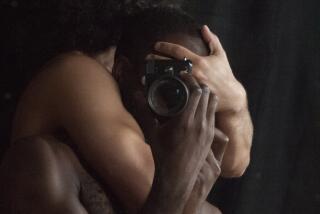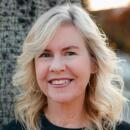Susan Straight on the powerful connection between memory, photos and the stories we tell
Since I was a child, I’ve been obsessed with photographs, probably because I’m of the generation between nothing and everything. Our grandparents often left behind so few photographs that we try to excavate their history with words alone. But our children, with smartphones, can document their lives every single day and send Instagram pics worldwide to relatives as well as strangers.
Working on a memoir, this winter I keep turning back to two books: “Letters to Memory,” the first memoir by Karen Tei Yamashita, a prize-winning novelist published around the world; and “10-Mile Radius,” the first memoir by photographer Cat Gwynn. Both are California natives investigating how photographs, archives, memory and narrative work but in vistas of remarkable opposition.
Yamashita, born in Oakland, raised in Los Angeles and living in Santa Cruz told me about her project in May, showing me some of the extensive archival material she inherited from her aunts, her parents and her extended family, including photographs, letters and documents. The photographs are stunning records of American history, especially the images of her ancestors. But Yamashita doesn’t merely recount the family stories behind these pictures or set them alongside vital statistics of war and betrayal. She interrogates the cruelty of internment and the random nature of immigration, war, birth and death and disease through her own probing, lively correspondence: Letters to Poverty, Modernity, Death, Love and Laughter but also addresses to Homer, to Ishi, the last Yahi in California, and to Vyasa.
The irony and dark humor of Yamashita’s interrogations, of her nimble prose and sentences, illuminate the tragedies. Posed portraits, of Yamashita’s grandmother along with nine other picture brides, young women leaving Japan to marry Japanese-American men in California, have a gravity and beauty of detail impossible to replicate now. Then, we see the family packing for internment and standing in the doorways of the crude cabins at Tanforan, in California, and Topaz, in Utah. The stark details of life in black and white are here. But Yamashita breaks our hearts with the story of her father’s college friend at UC Berkeley, Nobuo Kajiwara, who leaves internment by enlisting in the Army in 1943, whose life ends terribly at Anzio, Italy, and who shows up in this diary entry, dated August 26, 1942. It was the second wedding anniversary of Yamashita’s aunt Kiyo, living with her 1-year-old baby in a converted racetrack horse stall at Tanforan camp in California: “Chizu planned a waffle party for our anniversary, and we all enjoyed waffles. Nobu Kajiwara made the party possible by bringing the eggs and butter…”
Yamashita marvels at two items packed for internment: “I wonder about the waffle iron and the vacuum cleaner, if they made it from Tanforan to Topaz…You always read about Topaz and the dust storms that lifted the desert sand in blinding swirls and penetrated everything, seeped into the barracks and frosted the interiors…You can’t imagine that the Hoover upright survived such abuse. This wasn’t urban household dust…this was grit and living creatures – scorpions…” She speculates on her father’s plan: “What the heck, maybe it will come in useful…They didn’t confiscate it, and who’s defining what we can carry anyway?...The first stories I heard him tell about camp were these, chuckling in glee, as if to assure me of comic relief.”
Yamashita’s mother, Asako, died in 2015 at age 98. Yamashita, working on this memoir, writes: “Occasionally I set before her these letters, and she perused them silently, without comment…Living with her for over a decade, I heard her memories surface and recede, change and solidify, cloud and diminish.” It is even more vital in our present political climate to have this record of an American family. In 2016, a spokesman for a pro-Trump PAC, asked about the candidate’s plan for a “Muslim registry,” said, “We did it during World War II with Japanese.”
Cat Gwynn, born in Glendale to a mother born in Glendale, documents in vivid color and exquisite detail her life in Los Feliz as boundaries tighten and constrict after she’s diagnosed with cancer. Her memoir is a fascinating contrast, with the narrative of her own body, her inherited genetic markers for cancer, the excoriating attacks of chemo and radiation and her idea for survival: Turn each day into a victory, over three years of treatment, by photographing her intimate surroundings, while walking to radiation, while watching the people nearby, while seeing the smallest ornament of bird or leaf or door handle against the larger vista of sidewalk or sky.
Gwynn’s narratives are Southern Californian to the core, beginning with the description of her mother teaching her about the waves: Never turn your back on the ocean, and You’ve just survived the washing machine. Really, her mother teaches Gwynn what she will need to survive a larger vortex. “Cancer reduced my life to a ten-mile radius. I traveled to and from treatments. I saw doctors, went to physical therapy, psychotherapy, and acupuncture; I took vitamins and herbs, juiced, did Reiki and yoga, and meditated.” But it was art that saved her. “Steroids diminish the side effects of chemo, and one of the byproducts of steroids is insomnia. Imagine being sapped and amped at the same time…As my neighborhood slumbered, I sat propped up in bed with my phone processing photographs…processing my feelings, working them through filters, finessing tone, building depth…I crafted my photographic pilgrimage and sent it out into the world, all from the palm of my hand.”
Using her iPhone, using apps and filters, using her eyes and her own text to tell the story, she created a narrative I read again and again. The captions were like haiku, giving shape to an image of a discarded candy wrapper on a sidewalk where the tiniest plant emerges in a crack; to hospital corridors, ripped screen doors, secret stairways wrapped in gold fabric and to people she encountered on the street. Two favorites because of their implied narratives: Drought, a photo that could only be taken here in Southern California, an old metal sprinkler head buried in cracked golden earth, dried purple jacaranda blossoms trumpets of the end; and Angel, a haunting textured image of a young man with a shaved head, who agrees to the portrait because of Gwynn’s shorn skull, standing under metal beams, Los Angeles tattooed on his cranium as the city is imprinted inside the consciousness of the author.
Straight is a Critic at large. Her new short story “Princess of Valencia” will be published by Amazon Originals in February.
More to Read
Sign up for our Book Club newsletter
Get the latest news, events and more from the Los Angeles Times Book Club, and help us get L.A. reading and talking.
You may occasionally receive promotional content from the Los Angeles Times.









